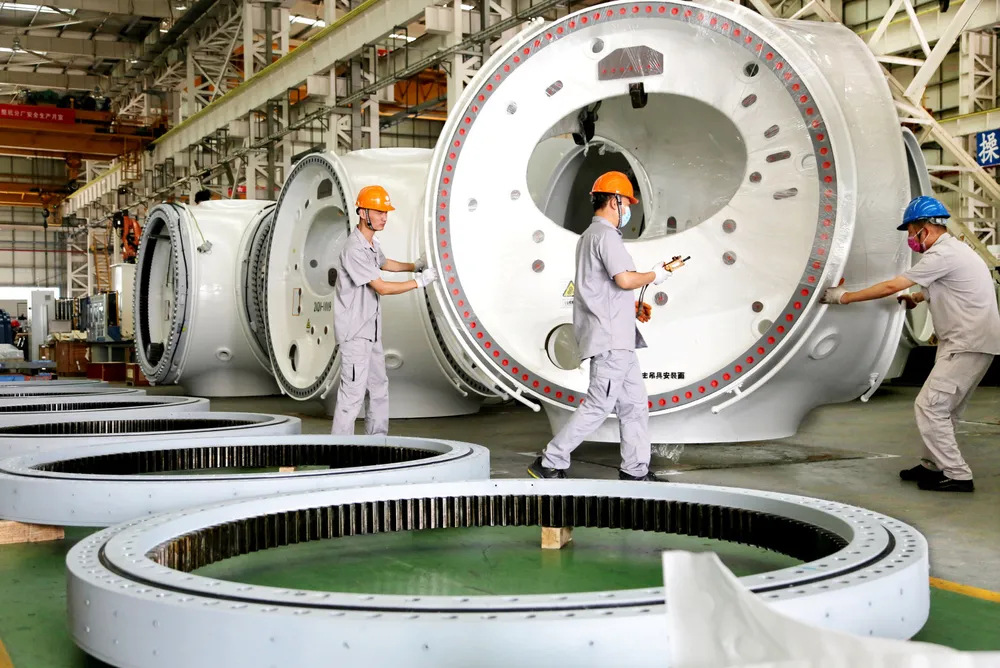World needs China and $78 trillion or net zero goal in peril, warns WoodMac
Dual goals of reducing dependence on China and decarbonising as quickly as possible ‘are at odds,’ says WoodMac

Tariffs and trade barriers on Chinese imports will either slow the energy transition or make it more expensive, warns Wood Mackenzie, which estimates $78tn in spending is now needed by 2050 to hit net zero and curb global warming to 1.5°C.
The world is currently heading towards a “base case” of 2.5°C warming, said energy consultancy WoodMac in its latest Energy Transition Outlook. That would bring disastrous consequences, including worsening extreme weather events such as heatwaves, wildfires and hurricanes along with sea level rise.
However, the risks are increasing that the world is headed for a “Delayed Transition,” with a “potentially catastrophic” 3°C of warming in which emissions don’t peak until the early 2030s.
“A string of shocks to global markets threaten to derail the progress in a decade pivotal to the energy transition,” said Prakash Sharma, vice president, head of scenarios and technologies for WoodMac.
“From the unresolved war between Russia and Ukraine to an escalated conflict in the Middle East, as well as rising populism in Europe and global trade tensions with China, the energy transition is in a precarious place and 2030 emissions reduction targets are slipping out of hand.”
But he said there is “still time for the world to reach net zero emissions by 2050 – provided decisive action is taken now.”
Curbing the current trend and bending the planet’s decarbonisation pathway to net zero and 1.5C by 2050 comes at a steep price, says WoodMac: $78tn.
WoodMac called for a doubling of annual investment in energy supply to US$3.5tn to build a low-carbon energy supply and infrastructure.
The report also notes that tariffs and trade barriers on imports from China, which dominates the supply chain for clean and green technologies, point to “growing discomfort” in the West.
China also “dominates” when it comes to critical minerals, particularly their downstream processing, said WoodMac. The US and Europe are seeking to diversify their supply chains away from China.
“These dual goals – of decarbonisation and reducing dependence on metals supply from China – are at odds,” said WoodMac.
“It will take years, if not decades, to shift away from China because it controls up to 70% of global supply chains across several commodities. It is also the lowest-cost producer.”
“The rest of the world may need to rely on Chinese manufacturing or be prepared to either pay a higher cost or delay the transition.”
Global energy demand is meanwhile projected to grow by up to 14% by 2050, said WoodMac. Emerging economies with rising populations and prosperity will see growth of 45%, while demand in developed economies peaks in the early 2030s and before entering a decline.
Electrification is key to reducing emissions, said WoodMac. In its base case, it says that displacing fossil fuels with more energy-efficient electricity leads to global emissions peaking in 2027 and subsequently falling by 35% through to 2050.
“While electrification is at the heart of energy security, the quick expansion of electricity supply is often constrained by transmission infrastructure which takes time to permit and build,” said Sharma.
Strong renewables growth “is a certainty,” said WoodMac, but current capacity is only currently expected to grow two-fold by 2030, short of the global tripling target set at COP28 last year.
Solar is the biggest contributor of clean power, followed by wind, nuclear (including large and small reactors) and hydro.
“Despite strong growth in renewables, the transition has been slower than expected in certain areas because many low-carbon technologies are not yet mature, scalable, or affordable,” said Sharma.
A key constraint is the high cost of low-carbon hydrogen, carbon capture, utilisation and storage, small modular nuclear reactors, long-duration energy storage and geothermal, he said. “Capital intensity is high, but the business case is weak without incentives.”
(Copyright)